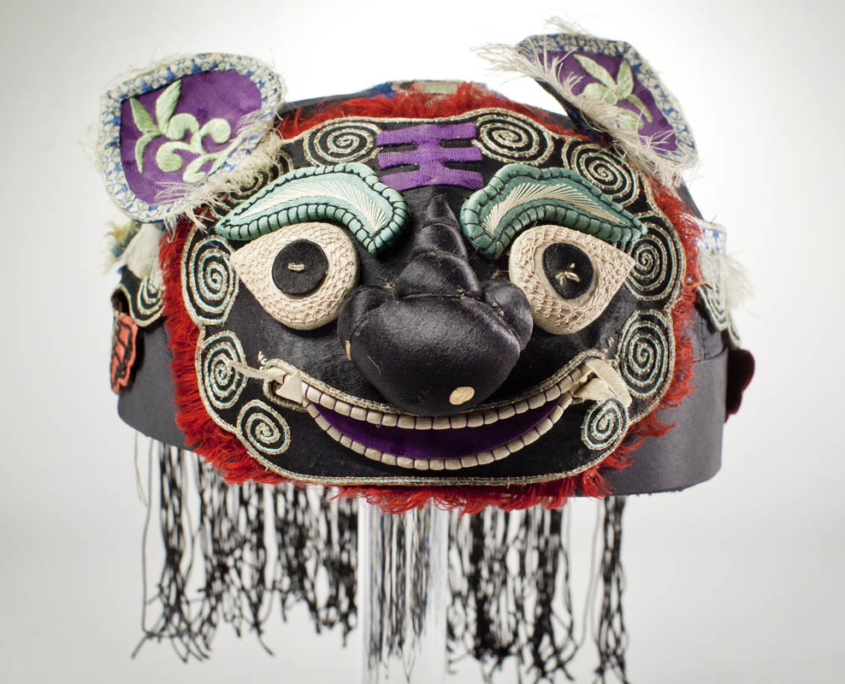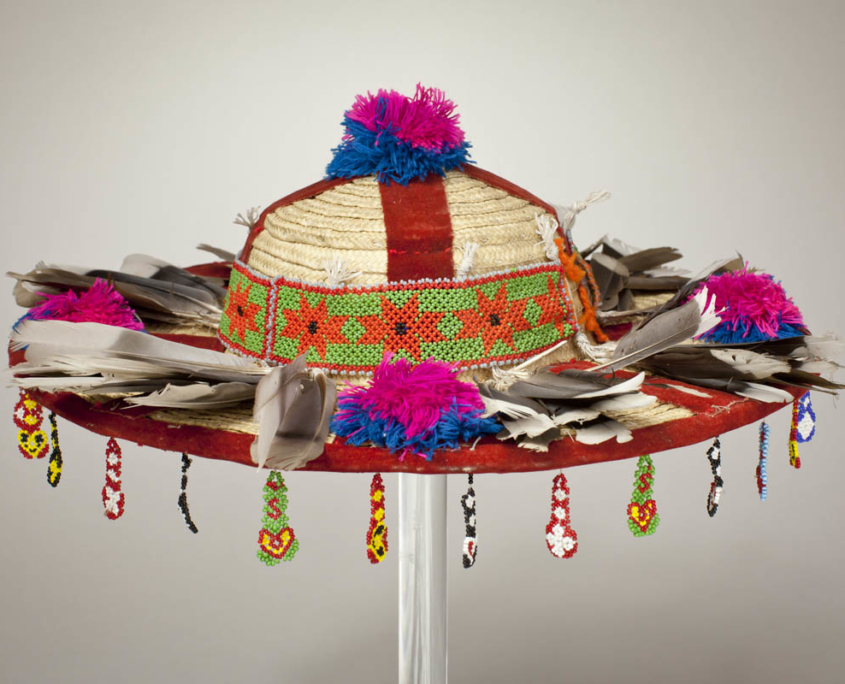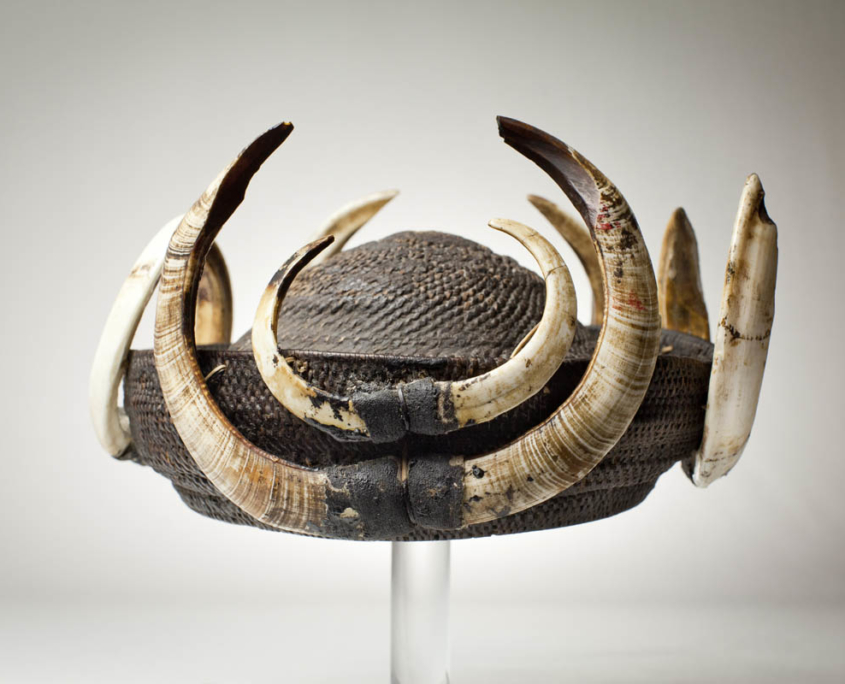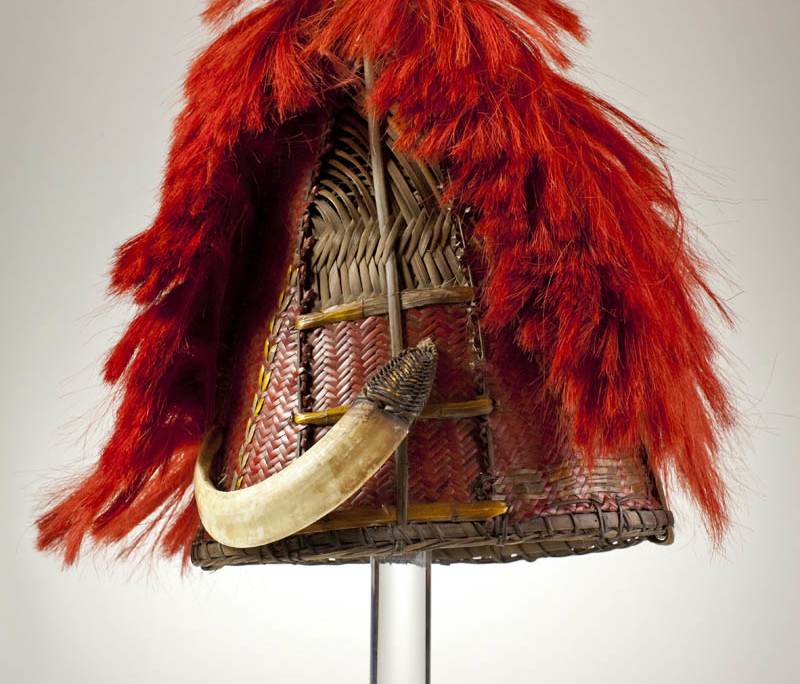The Global Language of Headwear: Cultural Identity, Rites of Passage, and Spirituality
/in Past Exhibitions /by Christina ClaassenFebruary 1, 2020 - April 26, 2020
Lightcatcher Building
The Global Language of Headwear: Cultural Identity, Rites of Passage, and Spirituality presents 87 hats and headdresses carefully selected from a private collection of more than 1300 extraordinary pieces of international headwear. This exhibition features hats from 42 countries across Asia, Africa, Europe, the Middle East, and North and South America, and is a tribute to the stunning diversity of the world’s cultures. With a few exceptions, the pieces are from the mid-to-late 20th century, and many are still worn today in parts of the world for revelry, ritual, and the rhythms of everyday life.
More than utilitarian objects of material culture, each hat is a unique work of art—not merely because of the skill required to make it, but also as a singular expression of creativity and cultural meaning. The profusion of shapes, styles, and materials, as well as the ingenious use of embellishments to decorate the hats, are limited only by imagination.
The Global Language of Headwear is organized into five thematic sections: Cultural Identity; Power, Prestige, and Status; Ceremonies and Celebrations; Spiritual Beliefs; and Protection. Hats and headdresses communicate timeless ideas—not only of beauty, but also of what it means to be human.
The Museum will also present a variety of headwear from its permanent collection in conjunction with this collection, including Northwest Coast cedar bark hats.
About the Curator:
Stacey W. Miller is an independent curator of ethnographic headwear. She has spent more than 30 years collecting and researching the cultural significance of hats and headdresses. Since 2000, she has delivered educational programs, lectured, hosted special events, and curated numerous exhibitions based on her collection.
Stacey purchased her first hat in 1979 after joining a group of Spaniards driving from Madrid to India on a 4-month overland adventure. Learning more about other cultures—their customs, values, and traditions—with each new acquisition, Stacey realized that hats and headdresses can have a profound significance beyond their decorative qualities. Not only do they instill an awareness and appreciation of diverse cultures, but they can act as a bridge between peoples, reinforcing personal, spiritual, and social values that we as humans all share. Today, Stacey’s collection has grown to more than 1300 hats and headdresses from almost every corner of the world. Her long-term vision is to establish a museum of world cultures as a way to promote cross-cultural interest and understanding.
International Arts & Artists in Washington, DC, is a nonprofit arts service organization dedicated to increasing cross-cultural understanding and exposure to the arts internationally, through exhibitions, programs and services to artists, arts institutions, and the public. Visit www.ArtsandArtists.org.
Featured image credit: Kayapo/Mekranoti Headdress (Akkapa-ri), Brazil; Mid-20th century; Feathers, cotton, reed. Courtesy of International Arts & Artists.
-

- Tiger cap, China, early 20th century; silk, cotton, embroidery; ©2012 Courtesy of Hat Horizons. Photograph by Matthew Hillman
-

- Rupurero, Shaman’s hat, Huichol people, Mexico, mid-20th century; palm leaves, feathers, beads, velvet, yarn; ©2012 Courtesy of Hat Horizons. Photograph by Matthew Hillman
-

- Chieftain’s hat, Nung-Rawang tribe, Myanmar, mid 20th century; rattan, boar tusks; ©2012, Courtesy of Hat Horizons. Photograph by Matthew Hillman
-

- Chieftain’s hat, Pende tribe, Democratic Republic of the Congo, mid 20th century, fiber, beads©2012, Courtesy of Hat Horizons, Photograph by Matthew Hillman
-

- Kayapo/Mekranoti Headdress (Akkapa-ri), Brazil; Mid-20th century; Feathers, cotton, reed. Courtesy of International Arts & Artists.
-

- Tarabuqueño Hat, Pacha Montera, Bolivia, early 20th century, wood, cotton, wool, embroidery, sequins, coins, metallic thread©2012, Courtesy of Hat Horizons.
-

- Phami Akha headdress, Thailand, mid 20th century; metal, beads, coins, cotton; ©2012, Courtesy of Hat Horizons. Photograph by Matthew Hillman.
-

- Calabash helmet, Philippines, mid 20th century, Calabash gourd, cotton, beads ©2012, Courtesy of Hat Horizons, Photograph by Matthew Hillman
-

- Thunderbolt crown, Tibet, China, early 20th century, metal©2012, Courtesy of Hat Horizons, Photograph by Matthew Hillman
-

- Four Winds hat (Ciegahpir), Saami people, Norway, late 20th century, wool flannel, cotton, trimming©2012, Courtesy of Hat Horizons, Photograph by Stacey Miller.
-

- Ceremonial headdress, Dayak/Kenyah tribe, Indonesia/Borneo, mid 20th centuryrattan, cloth, glass beads, goat hair, hornbill feathers©2012, Courtesy of Hat Horizons, Photograph by Matthew Hillman
-

- Naga helmet, India, mid 20th century; cane, dyed goat hair, boar tusks; ©2012, Courtesy of Hat Horizons. Photograph by Matthew Hillman
-

- Bwami hat, Lega tribe, Democratic Republic of the Congo, fiber, buttons, beads, elephant tail hair©2014, Courtesy of Hat Horizons, Photograph by Kenzie Robbins
-

- Kupa, Kalash hood, Pakistan, mid 20th century, wool, cowrie shells, buttons, beads, ©2012, Courtesy of Hat Horizons, Photograph by Matthew Hillman
Watch a series of “Headwear Highlights” with Community Engagement Manager, Katherine Everitt.
partners








